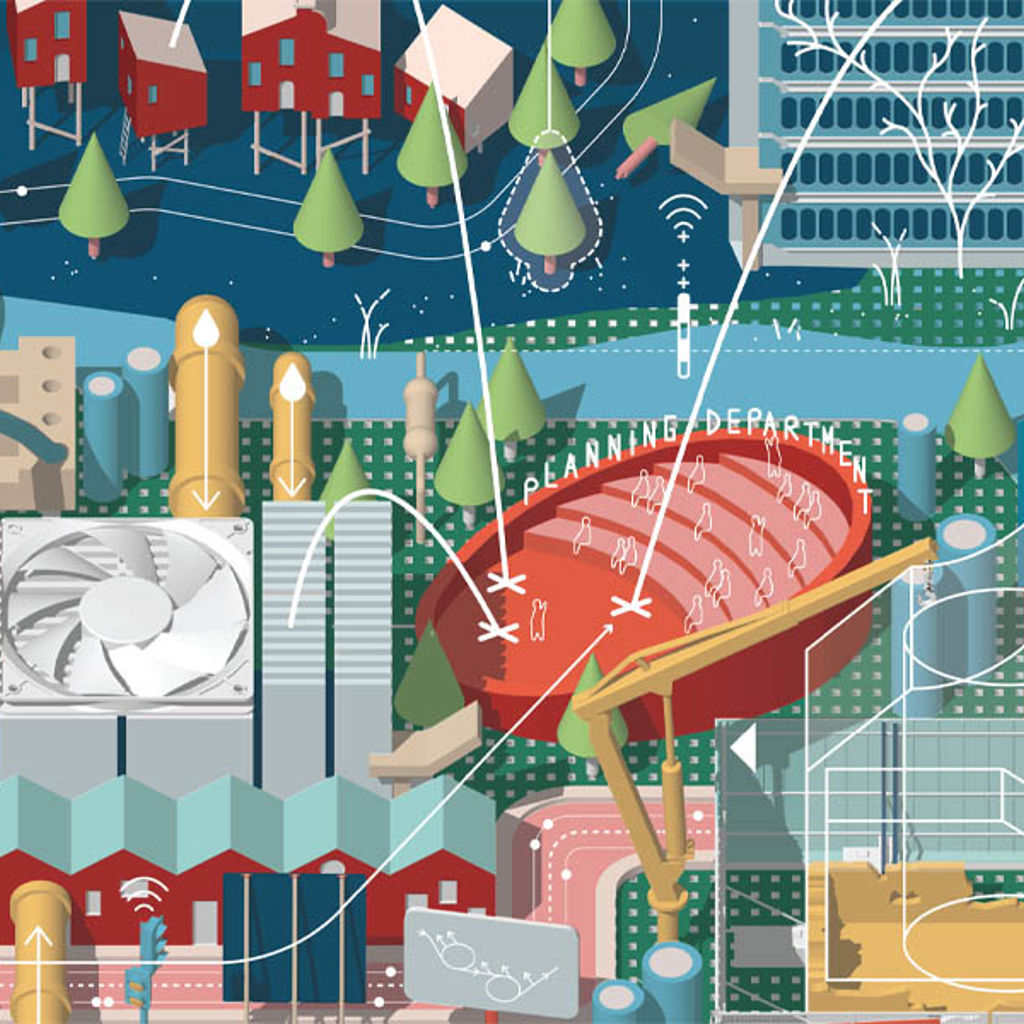Back in November 2023, around fifty Berliners gathered in CityLAB Berlin, armed with the latest insights into the CO2 emissions implications of their personal transport choices. They were enthusiastically quizzing a group of actors playing the role of mobility activists, city administrators and politicians, while being quietly observed by interdisciplinary researchers. This somewhat unique scenario was the first step in a new kind of public policy making, an in-situ decision-making simulation, driven by data, but crucially, also by ordinary people.
So, why were a range of city inhabitants playing at being policy makers for a day? And why adopt such an exotic process for a commonplace local government task like transport planning?
Connecting knowledge to behaviour
One of the toughest elements of the climate change challenge, is that we don’t ordinarily extrapolate from our own personal choices to conclusions about ‘what this means for the world’. Environmental science is complex, and given how varied our knowledge on this topic is individually, the emissions implications of consumer or travel choices can be hard for us to grasp. Take car ownership: driving is a social norm and most people don’t obsess over whether their car use is ‘right or wrong’ – they simply have to get to work, get their kids to school or whatever it might be. Immediate practical goals tend to trump more abstract, conceptual or long-term concerns – an ongoing challenge for transport policy in the era of climate change.
Of course, we do in fact possess emissions data and understand the implications for cities. In fact, as transport and urban planners, we depend on it to shape decision making: about routes, levels of service, and many other things. So the possibility emerges: what if we could connect the community-wide behavioural data insights we possess to individual choices made by the public?
Back to our social experiment. In Berlin, the city authorities had already realised that the population’s existing travel preferences wouldn’t meet the city’s 70% emissions reduction target by 2030 (or net zero by 2045). The city has invested heavily in public transit over many decades, but there are still too many car journeys made and fossil fuel vehicles on the road. Parking is cheap, incentivising a continuing use of cars, also using up lots of space at street level. The authority’s insight was to let the population learn about these issues, understand their responsibility and agency in this context, and use a kind of citizens’ assembly process to make ground-up decisions about future transport planning.
Visualising choices with agent-based modelling
In order to work, this project would require detailed, credible and compelling data about the emissions produced by different groups’ transport choices. Arup, the Alexander von Humboldt Institute for Internet and Society, the Kompetenzzentrum Wasser Berlin, and Senozon jointly developed a data platform that would reveal the emissions impacts of travel choices for 11 different segments of the city population, from young parents to elderly citizens.
The dashboard explores six scenarios for mobility and emissions by simulating effects of different transport measures and their impact on air quality in Berlin. Together with the Berlin Senate Department for Mobility, Transport, Climate Protection and the Environment, we have developed various scenarios that can be divided into three categories: firstly, mobility and the resulting emissions on an average working day in 2023 were shown.
The second simulation shows mobility and transport-related emissions in the Berlin urban area in 2030, assuming that the current administration’s plans for this time horizon are actually implemented. The third category assumes that these targets will be achieved but goes even further: the simulation models the measures that the Berlin administration is considering introducing, such as increasing curb-side parking fees, banning fossil fuel vehicles from the inner city, or introducing ‘super-blocks” (a low traffic neighbourhood idea championed across Barcelona) that Berliners refer to as ‘Kiez-Blocks’. All these measures would transform Berlin in one way or another, affecting Berliners and their urban environment. When or whether any of these measures will be introduced in Berlin, as well as their finalised form, are still open questions. They are also questions that will touch the whole community. So, this is where active and informed citizen engagement comes into play.
The community explores… and decides
The city transport model we have developed comprises a wide variety of relevant travel data. The present scenario, Berlin 2023, is based on a combination of various data including statistics, questionnaires, and anonymised cell-phone data. The simulations of all future scenarios by 2030 couldn’t be calibrated in quite the same way, but they are based on assumptions about the development of the city and the choice of means of transport by Berliners under the changed parameters.














